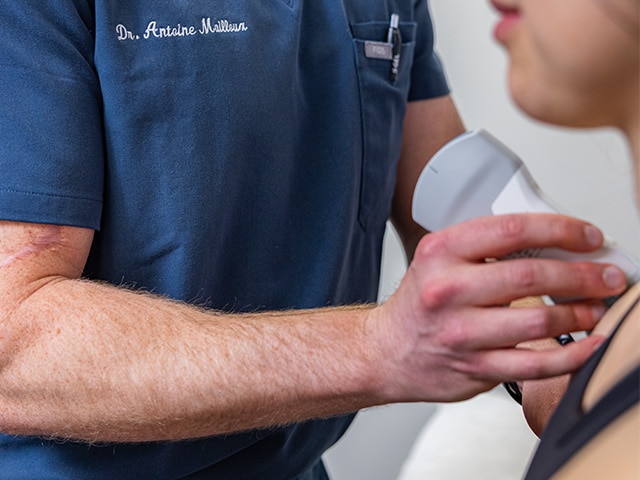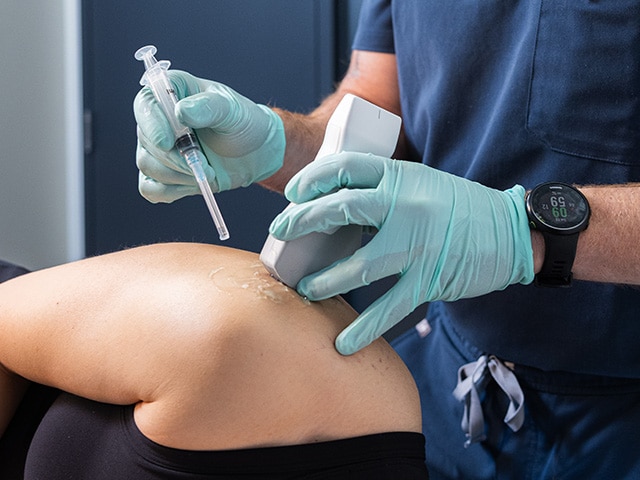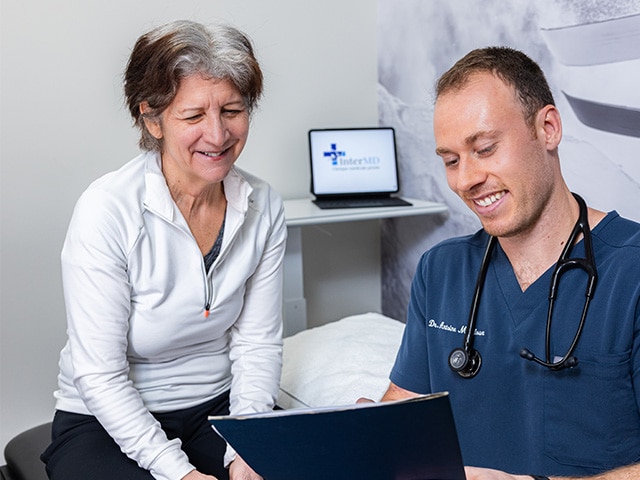At InterMD, our commitment is to understand your needs, relieve your pain, and improve your quality of life.
Musculoskeletal disorders are common and often very disabling. They represent a large proportion of medical consultations.
At InterMD Medical Clinic, we have developed specific expertise in their assessment and treatment.
Because there are many possible causes of pain, an accurate diagnosis is essential to guide you toward the most appropriate treatment.
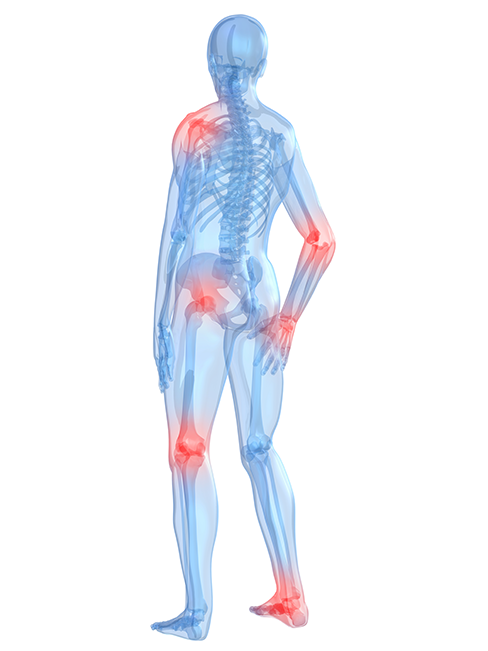
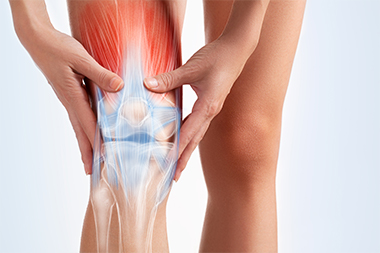
The knee, one of the most frequently used joints, allows movement while bearing much of our body weight.
Osteoarthritis: cartilage wear causing pain and stiffness.
Ligament sprains: often related to sports or sudden movements.
Meniscal injuries: damage to the shock-absorbing pads.
Tendinitis: pain in the front of the knee, common among athletes.
Osteoarthritis: cartilage wear causing pain and stiffness.
Ligament sprains: often related to sports or sudden movements.
Meniscal injuries: damage to the shock-absorbing pads.
Tendinitis: pain in the front of the knee, common among athletes.
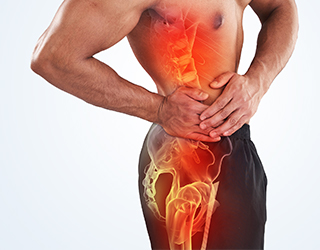
The hip supports body weight and enables movement. Though robust, it is under constant stress and prone to several issues.
Osteoarthritis: pain and stiffness, often felt in the groin.
Trochanteric tendinitis and bursitis: pain on the outer hip due to repetitive movements or prolonged positions.
Femoroacetabular impingement: specific internal hip conditions, common among athletes and physical workers.
Osteoarthritis: pain and stiffness, often felt in the groin.
Trochanteric tendinitis and bursitis: pain on the outer hip due to repetitive movements or prolonged positions.
Femoroacetabular impingement: specific internal hip conditions, common among athletes and physical workers.
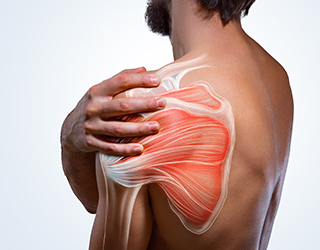
The shoulder allows great freedom of movement, but that mobility makes it vulnerable.
Tendinitis and tendinopathies: inflammation or damage of rotator cuff tendons due to overuse or repetitive movements.
Bursitis: inflammation of protective sacs around tendons.
Frozen shoulder (capsulitis): painful stiffness severely limiting motion.
Osteoarthritis: cartilage wear that makes daily movements difficult.
Tendinitis and tendinopathies: inflammation or damage of rotator cuff tendons due to overuse or repetitive movements.
Bursitis: inflammation of protective sacs around tendons.
Frozen shoulder (capsulitis): painful stiffness severely limiting motion.
Osteoarthritis: cartilage wear that makes daily movements difficult.
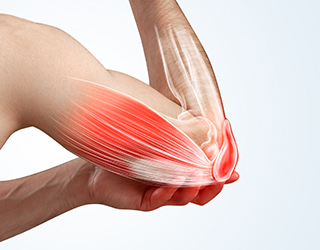
The elbow is vital for many everyday actions. Although strong, it is often affected by repetitive-motion issues.
Tendinitis and tendinopathies: such as lateral epicondylitis (tennis elbow), causing pain and weakness with movement or effort.
Osteoarthritis: less common, but possible after trauma or repetitive strain.
Tendinitis and tendinopathies: such as lateral epicondylitis (tennis elbow), causing pain and weakness with movement or effort.
Osteoarthritis: less common, but possible after trauma or repetitive strain.
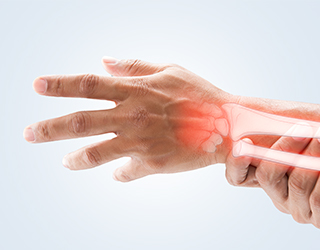
Essential for nearly all activities, they combine fine motor skills and mobility.
Tendinitis and tendinopathies: tendon pain from repetitive movements, as in De Quervain’s syndrome.
Osteoarthritis: especially in the thumb (rhizarthrosis) and fingers.
Carpal tunnel syndrome: numbness and weakness due to nerve compression.
Trigger finger: painful locking of a finger during flexion, caused by inflammation of the tendon pulley.
Tendinitis and tendinopathies: tendon pain from repetitive movements, as in De Quervain’s syndrome.
Osteoarthritis: especially in the thumb (rhizarthrosis) and fingers.
Carpal tunnel syndrome: numbness and weakness due to nerve compression.
Trigger finger: painful locking of a finger during flexion, caused by inflammation of the tendon pulley.
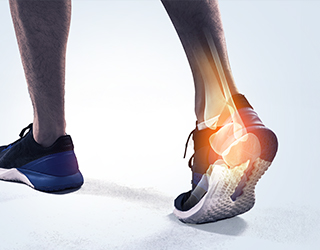
They support body weight and ensure stability and movement.
Ankle sprains: very common, often due to a misstep or sports activity.
Tendinitis: e.g., Achilles tendon injury causing pain and stiffness at the back of the ankle.
Plantar fasciitis: heel pain, especially when walking or standing for long periods.
Osteoarthritis: less common, usually following trauma.
Ankle sprains: very common, often due to a misstep or sports activity.
Tendinitis: e.g., Achilles tendon injury causing pain and stiffness at the back of the ankle.
Plantar fasciitis: heel pain, especially when walking or standing for long periods.
Osteoarthritis: less common, usually following trauma.
Cortisone is a powerful anti-inflammatory medication used to reduce inflammation and pain. When injected directly into a joint, bursa, or around a tendon, it precisely targets the affected area.
Can also include (as needed):
Hyaluronic acid is a molecule naturally found in the body. In medicine, a purified, safe version is used and can be injected directly into joints or around tendons.
Prolotherapy involves injecting a medical dextrose (sugar) solution into ligaments, tendons, or joints. This solution triggers a mild, controlled inflammatory response that stimulates the body’s natural healing and tissue-repair mechanisms.
Ask our physicians if these treatments are appropriate for your condition.
Included as needed during consultations: prescription medication, lab or imaging requisitions, specialist or allied health referrals.
*No referral required. Neck and back excluded from injection treatments.
Click on “Book an appointment now” to view pricing and service details.
